As a content marketer, you have probably had many sleepless nights just thinking about what to write. While SEO keyword research helps a lot with finding relevant content topics for your site, you can’t help but wonder if you’ve missed out on any topics that would’ve brought in more traffic.
Content gap analysis helps you build content marketing strategies that drive more traffic, increase conversions, and create value for your customers and site visitors. Nowadays, SEO can determine whether your online business succeeds or fails.
To improve your SEO performance, you need to find gaps in your content strategy and fill them in. Read on to learn more about content gap analysis and how to harness it to generate more traffic and site revenue.
- What is a content gap analysis?
- Benefits of conducting a content gap analysis
- How to conduct content gap analysis
- Conduct a content audit and map content to your buyer’s journey
- List your competitors and analyze their rankings
- Consolidate existing content to improve overall rankings
- List and prioritize your content gaps
- Conduct an annual or quarterly review
- Summing up
What is a content gap analysis?
Content gap analysis is the process of evaluating and finding topic gaps in your existing content. This involves identifying holes in your content that align with different stages of the customer journey. These include missing high-volume keywords that would otherwise have raised your search ranking.
A content gap analysis consists of an audit of the following types of content:
- website;
- landing pages;
- blogs and articles;
- social media content;
- eBooks and other downloadables.
A content gap analysis will provide you with a better understanding of the type of content and topics you should create for each stage of your marketing funnel. A content gap analysis will also help you understand the type of content you should be producing to build relationships with your leads and convert them into customers.
Improving your SEO profile shouldn’t be the only reason you perform a content gap analysis. While improving your search ranking is always good, communicating value to your potential clients at every stage of the customer journey should be your primary driver. As such, your content should offer actionable insight that meets customers’ needs.
Benefits of conducting a content gap analysis
Doing content gap analysis is a long, painstaking process. So why do you need to do it anyway?
Content gap analysis allows you to identify where your content is falling short, especially in terms of attracting traffic to your website. While your business shouldn’t aim to be all things to all people, you should at least be aware of what potential site visitors and customers are looking for from brands in your niche.
When it comes to online marketing, this knowledge usually comes in the form of search keywords. For instance, if you’re running a SaaS business, you might identify a range of relevant sales keywords that you haven’t targeted. If you haven’t created content to target those keywords, you’re missing out on customer acquisition opportunities.
Another key benefit of doing content gap analysis is that you’re able to discover where your competitors are in the search results. This helps you see where you need to improve your SEO, especially if you want to go head-to-head with your competitors. At the same time, it will help you identify keywords that they aren’t targeting, giving you the opportunity to swoop in and claim the top search ranking for those neglected keywords.
How to conduct content gap analysis
Content gap analysis involves examining your blog to find out what content you are missing. The best way to identify those gaps is by following a set system to identify keyword opportunities. Below is a step-by-step guide to doing content gap analysis.
Conduct a content audit and map content to your buyer’s journey
The starting point for any content gap analysis is a review of the content you have created. You should list all of the articles and the major keywords that you are ranking for. In addition, you should see how people engage with your content. Are the people who read those articles turning into customers? Perhaps more importantly, are people even reading your content?
A review of your existing content can provide plenty of interesting insights. Your review will also provide a baseline for identifying content that you haven’t created. Here is a simple content audit process you can implement on your site:
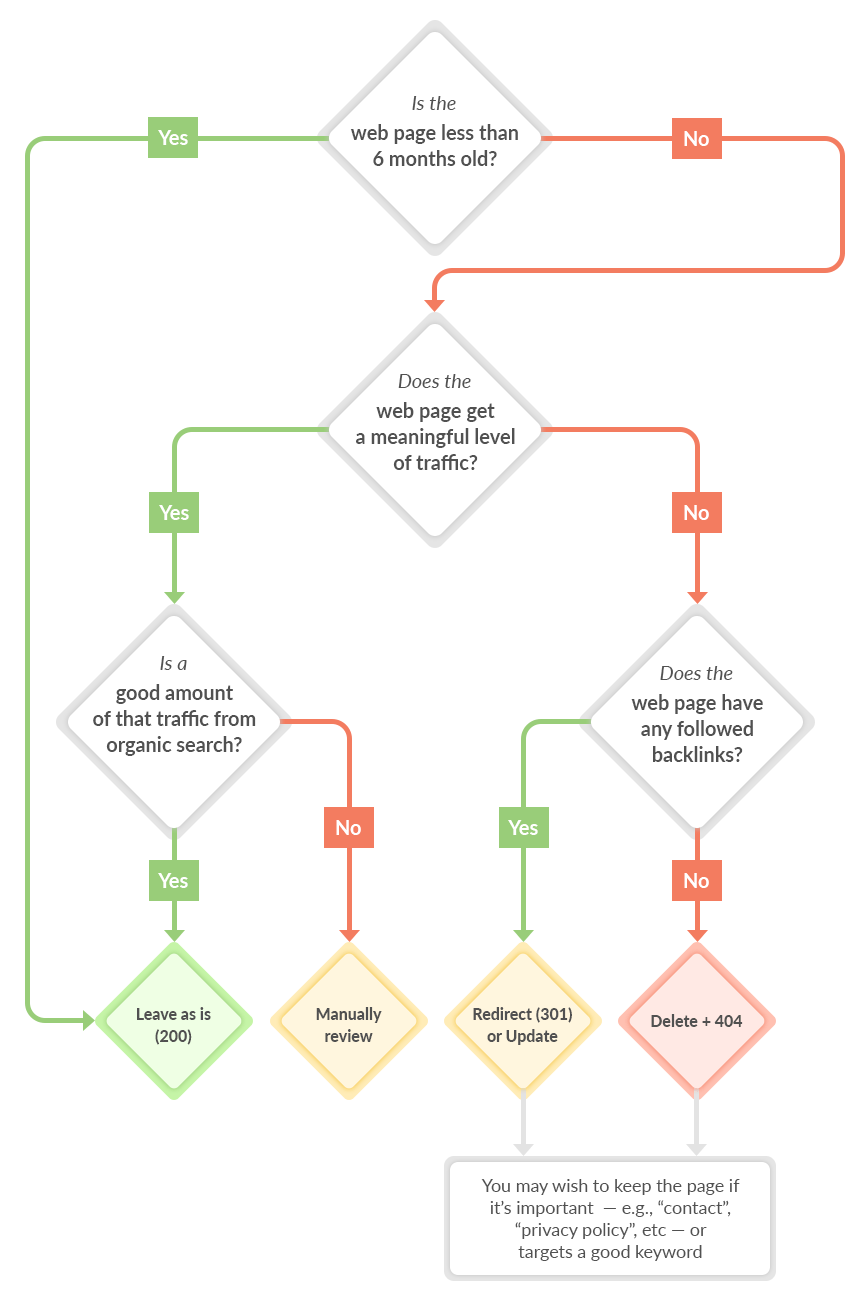
Let’s focus on the “Manually review” part of the flowchart. There are several things you can do to find out why your content pages aren’t showing up in search results:
- Check if your page is optimized for a high-volume keyword.
- Look for duplicate content within your site.
- See if the page has outdated content or no content at all.
- Look at the HTML code for the page and search for a “noindex” tag.
Some of the tools you can use to conduct a content audit include SEMRush, Screaming Frog, Ahrefs, and Google Keyword Planner.
For this example, let’s analyze an article from The Daily Beast:

Running a quick Google search shows that the article above isn’t in the top results for the following keywords:
- wireless earbuds review;
- best wireless earbuds;
- high quality wireless earbuds;
- master dynamic wireless earbuds;
- MW08 wireless earbuds.
The top results for the first four keywords are all review compilations and tech sites, so it’s a bit tough to compete against those. However, for the “MW08 wireless earbuds” keyword, the page isn’t on the first page — which is dominated by Amazon and tech blogs. I had to click on page 2 to find the article.
While the page ranks third for the keyword “Pair of Earbuds That Look Great and Sound Better,” it shares practically the same content and title with two Yahoo! News sites:
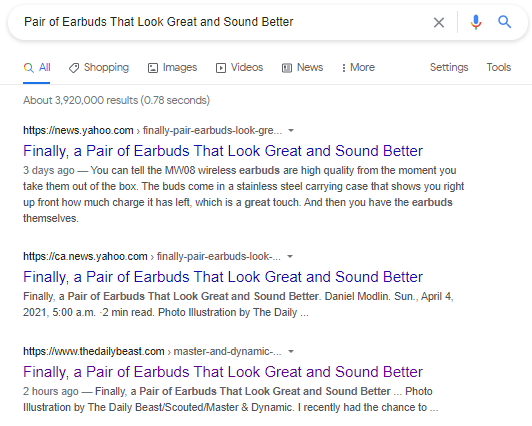
It appears that the page isn’t optimized for high-volume keywords. A quick Google Keyword Planner check confirms that observation:
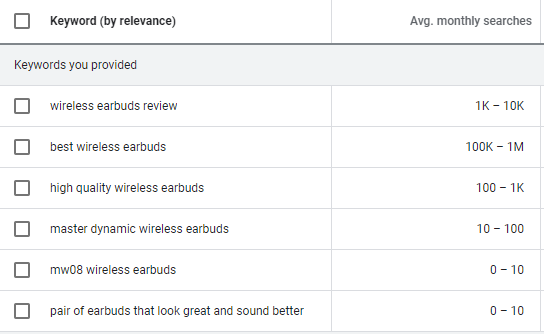
So far, we’ve uncovered a few issues with how the article was optimized:
- It’s not optimized for high-volume searches. Instead of targeting keywords that have more than 1,000 searches a month, it was optimized for a keyword that was barely even used.
- It was published after other sites (in this case, Yahoo! News) published identical content.
- Finally…the page URL did not even match the title of the article.
The page URL contains the word “earphones:”

The fact that this URL was not corrected before the article was published led to Google not being able to detect that the article was about wireless earbuds. Using the correct terminology in the URL could lead to better search result rankings.
Once you’ve conducted a review of your content, consider mapping the content against your buyer’s journey. You’ll find different phrases align with different stages of the buyer journey.
For example, people in the “Awareness” stage have a problem that they need to solve, so they tend to use words like “How to” or “troubleshoot.” In the “Consideration” stage, they already know how to solve the problem, so they search for “tools” or “solution providers.” Finally, users in the “Decision” stage are already choosing from two or more potential solutions, so they search for reviews and comparisons so they can arrive at an informed decision.
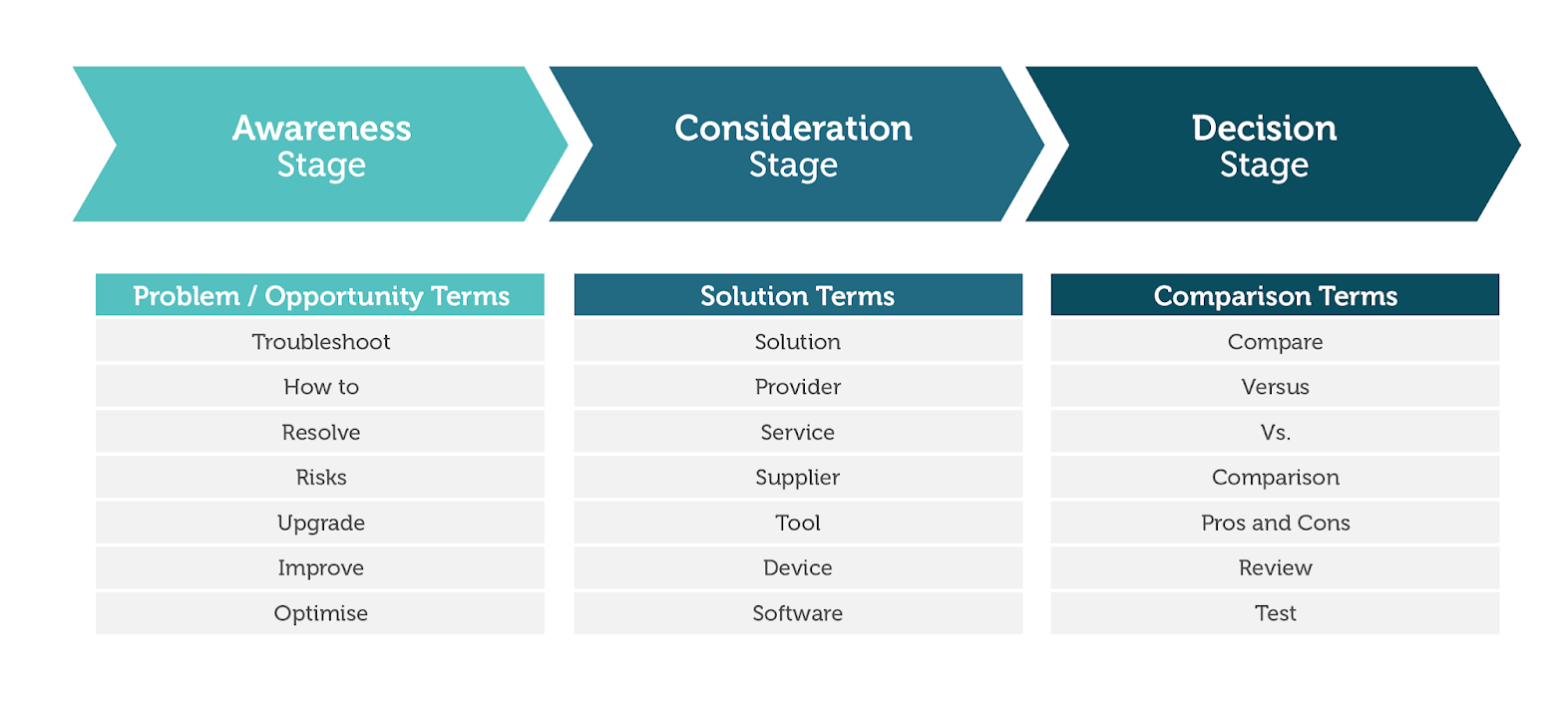
You want content for every step of the customer journey. By aligning your content with the customer journey, you can identify content gaps. You can also see where your existing content is performing strongly.
List your competitors and analyze their rankings
Unless you’re offering a one-of-a-kind product or service, you’ll be up against competitors. To ensure that you stay ahead of your competitors, you need to be aware of their marketing strategy.
You want to look at what they write in their blogs and the type of content they produce to achieve high search rankings. As you assess what works for them, you can discover gaps in your content marketing strategy.
Creating a list of competitors is a straightforward process. If you don’t know your competitors, modern SEO tools can provide valuable insights. For example, the Ahrefs Backlink Checker tool can help discover competitors and the keywords that they used to rank high in search engine results:
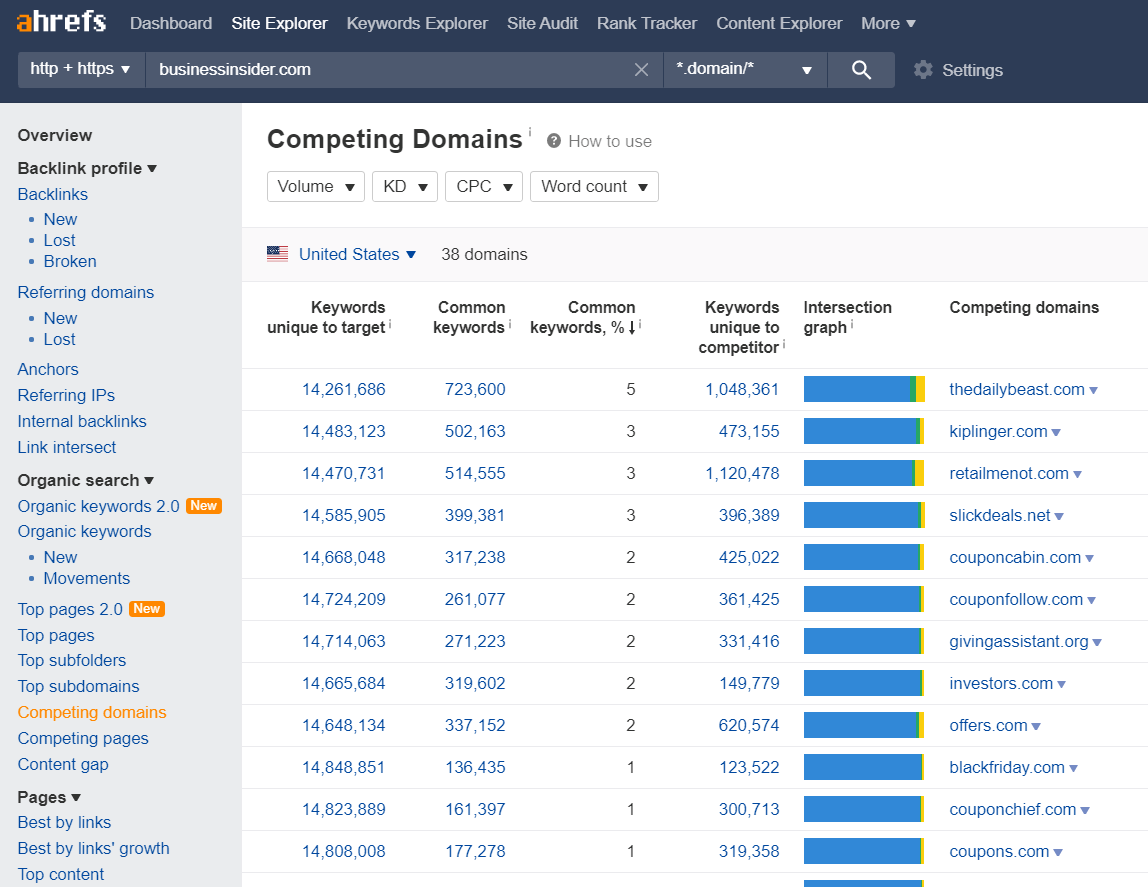
I recommend also doing a review of the top pages for each domain. For example, by clicking “Top Pages,” you can see the most important pages and the associated keywords for each competing website.
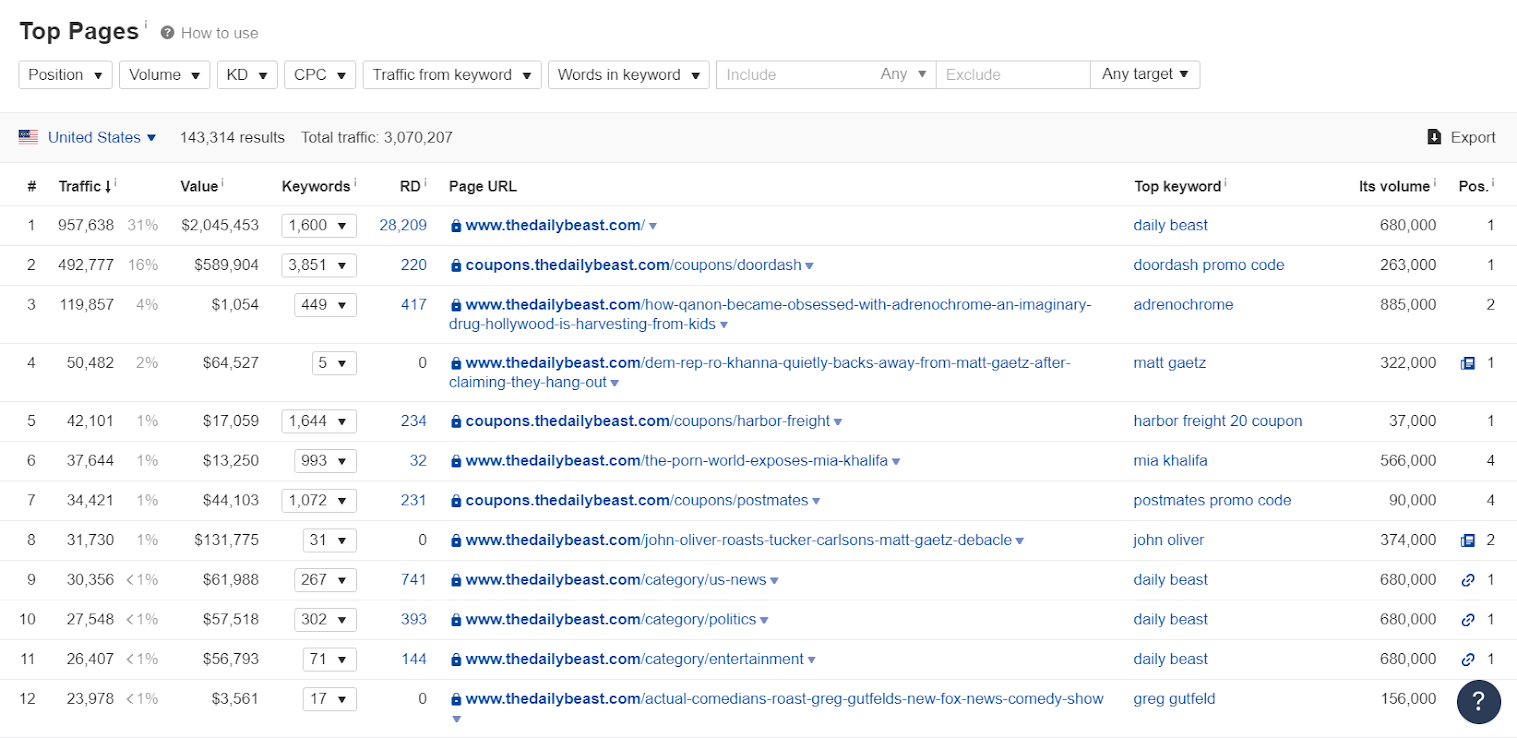
Are your competitors’ sales strategies similar to yours? If so, checking the type of content they create for each stage of the funnel will give you an idea of their strategy. For example, do they publish a lot of “how to” articles, listicles, or thought leadership pieces? Do they use case studies and white papers to establish their industry credibility?
These insights can be very useful to your brand as you define your SEO strategy, especially if you want to differentiate yourself from your competitors.
For example, if a competitor isn’t known for good after-sales service, you can publish explainer content to promote your own solutions. You can also read their case studies and determine how your brand approaches similar cases. Finally, if your competitors aren’t exactly fond of publishing thought leadership articles, you can step in to fill the void in knowledge with your own long-form content.
Consolidate existing content to improve overall rankings
If you have a large library of online content on your site, you might discover that you’ve written about the same topic more than once. Duplicate content tends to lower overall SEO performance.
You can identify pages that compete for the same keywords through Google Search Console. Click on a keyword, and then click the “pages” tab to see the pages that rank for the phrase.
Let me give you an example using the branded anchor text, Voila Norbert.
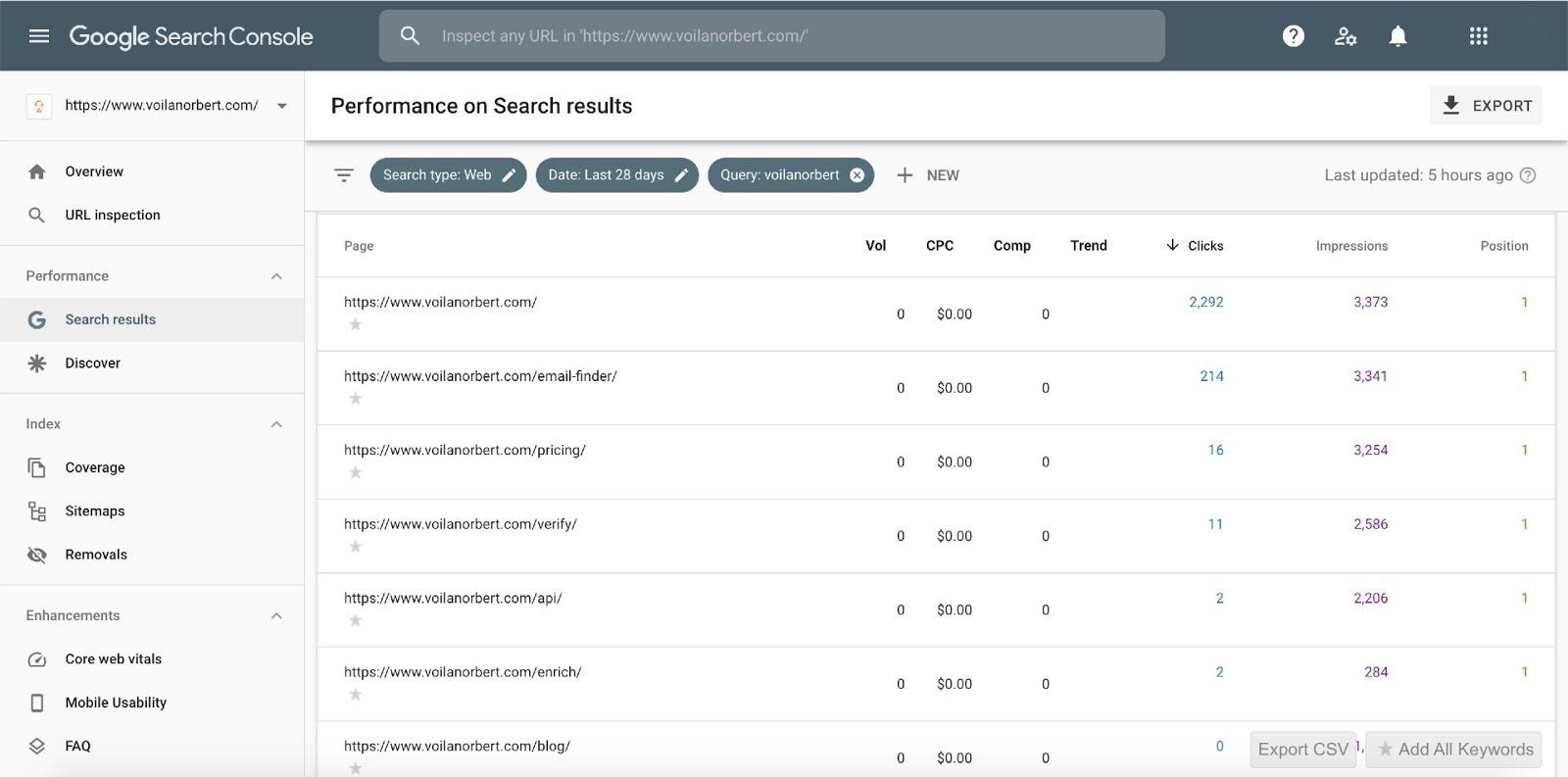
When you identify a keyword that ranks across multiple pages, you have the choice of either:
- consolidating the content: you can redirect traffic from the deleted pages to the page you want to direct all of the traffic to, or;
- repurpose your content: you can change each page’s focus, so they target a different keyword.
You should do a comprehensive review of your content to identify where multiple pages rank for the same term. When you identify a problem, decide on the most appropriate course of action.
List and prioritize your content gaps
At the end of the research phase, you should have a list of keywords. These keywords will align with your content gaps. If you’re very lucky, the list will be short, and you will have the capacity to create content around all of those keywords quickly.
More than likely, though, you’ll find that you have more work than you can handle. Moreover, you won’t have the capacity to promote all of these pieces of content equally.
If you face this situation, you will have to prioritize the content you create and promote.
There are various ways you might prioritize content. You might focus on keywords that are easy to rank in the search results. On the other hand, you might prioritize content that will be most valuable for the customer journey.
For example, when we conducted a content gap analysis for Right Inbox, we discovered that we’d covered most of the core sales terms. However, we were missing out on many top-of-the-funnel search terms. So, we decided to create articles on topics like “how to create a new Gmail account.” We couldn’t have gained these insights without conducting a content gap analysis.
Conduct an annual or quarterly review
Content marketing is constantly evolving. Some of your competitors will experiment and try to implement innovative content marketing strategies. At the same time, consumer preferences change from time to time.
You should conduct regular appraisals of your marketing efforts across every channel you utilize, including email marketing. One of the strategies that you can use to assess your marketing efforts is a content gap analysis.
A comprehensive content gap analysis can help inform your content marketing strategy. You can utilize the insights you gain through a comprehensive review to improve your marketing efforts.
Summing up
Content gap analysis involves auditing your existing content. Identifying content gaps will help you create content that draws in readers. This guide discussed how to conduct a content gap analysis.
Your content gap analysis should start with a content audit and mapping your content against the customer journey. That stage of the content audit should help you assess your content marketing efforts and identify growth opportunities. It’s a bit like an internal review mixed with a brainstorming session.
Once you’ve conducted an internal audit, review the marketing strategies of your competitors. You can learn a lot from their insights and mistakes.
Finally, combine these two sets of information, and devise your content marketing strategy. Decide which keywords or topics are most important for your business, and create relevant content to fill those content gaps.







